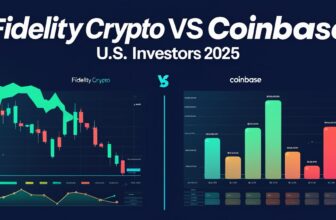
In today’s markets, cryptocurrency vs fiat is more than a theoretical debate – it’s central to trading strategy. Cryptocurrencies like Bitcoin are digital assets running on decentralized networks, while fiat currencies (USD, EUR, etc.) are government-issued legal tender. Some crypto advocates even envision a single global digital money: as tech entrepreneur Jack Dorsey put it, “the world ultimately will have a single currency… I personally believe that it will be Bitcoin”. However, for now fiat systems remain entrenched in finance, backed by central banks and legal frameworks. Traders must therefore weigh how crypto’s novel features (borderless 24/7 trading, high volatility, etc.) compare to the established strengths of fiat (stability, ubiquity, regulatory certainty).
Cryptocurrency adoption is growing, but still small relative to fiat usage. For example, about 560 million people (≈6.8% of the global population) held cryptocurrency in 2024. In contrast, nearly everyone uses some form of fiat money daily. Market behavior reflects this gap: fiat pairs (e.g. EUR/USD) tend to move in narrow ranges set by policy, whereas crypto prices can soar or crash dramatically. In late 2024 Bitcoin reached $100,000 for the first time, showcasing crypto’s explosive potential. This cryptocurrency vs fiat money context means traders face new dynamics – soaring potential gains, but also steep risks – when allocating between the two.
Overview of Cryptocurrency vs Fiat
| Key Insight Category | Cryptocurrency Impact | Fiat Currency Impact | Trading Strategy Implications |
|---|---|---|---|
| Market Adoption | 560M people hold crypto globally (6.8% of population) | Nearly universal daily usage worldwide | Crypto offers growth potential but limited mainstream adoption |
| Volatility Patterns | Double-digit % swings in days (BTC hit $100k in Dec 2024) | 1-2% moves on major economic news | Crypto enables aggressive strategies; fiat suits conservative approaches |
| Trading Hours & Liquidity | 24/7 markets with concentrated liquidity in major pairs | 24/5 weekday hours with $7+ trillion daily forex volume | Round-the-clock crypto opportunities vs scheduled fiat market access |
| Regulatory Framework | Evolving rules with platform risks (e.g., Binance CEO case) | Mature oversight with deposit insurance and legal protections | Monitor crypto regulations closely; rely on established fiat frameworks |
| Transaction Speed & Costs | 1 sec – 10 minutes settlement with low network fees | 1-14 days with multiple intermediary fees | Crypto offers faster fund movements for active trading strategies |
| Supply Mechanics | Fixed/algorithmic supply (Bitcoin capped at 21M) | Flexible supply controlled by central banks | Crypto scarcity vs fiat monetary policy creates different value drivers |
| Digital Evolution | Decentralized networks with no central authority | CBDCs emerging (Digital Euro launch Oct 2025) | Watch CBDC rollouts that bridge crypto innovation with fiat control |
| Portfolio Role | High-risk diversifier with explosive potential gains | Stability anchor with predictable behavior patterns | Use complementary allocation: crypto for alpha, fiat for stability |
Cryptocurrency vs Fiat: Volatility and Market Dynamics
Cryptocurrencies are widely considered much more volatile than traditional fiat instruments. As Coinbase notes, crypto markets have seen “steep rises and subsequent falls” and are “more volatile as a category than stocks”. For instance, Bitcoin often swings double-digit percentages in a single week, allowing traders to attempt “buying the dip” for quick gains. By contrast, major fiat currencies usually drift in single-digit moves tied to inflation and interest rate data. Volatility for crypto has been slowly declining with higher trading volume and institutional involvement, but still far exceeds that of most fiat pairs.
- High Volatility (Crypto) – Bitcoin & altcoins can move 10% or more in days. E.g. BTC–USD hit $100k in Dec 2024.
- Low Volatility (Fiat) – Major fiat pairs (USD/EUR, etc.) typically move only 1–2% on major news.
Traders treat these differently. Crypto’s volatility (and 24/7 hours) attracts aggressive strategies and hedging techniques not common in forex. For example, a news-driven move in Bitcoin can create arbitrage or momentum trades around the clock. Meanwhile, fiat traders rely on scheduled economic releases and central bank guidance. In either case, effective risk management is crucial. Key point: crypto’s wild price swings can yield large returns – or losses – quickly.
Cryptocurrency vs Fiat Currency Comparison: Liquidity and Trading Hours
Liquidity and market structure also differ. Cryptocurrency markets operate globally 24/7, whereas most fiat trading (forex, bonds, equities) follows weekday hours. A cryptocurrency exchange never sleeps, which means news can trigger trading at any hour. Fiat markets, by contrast, pause on weekends or holidays. In terms of depth, the forex market is vastly larger than any single crypto market. For example, Cointelegraph reports the South Korean won saw ~$456B of crypto trading volume in Q1 2024 (beating the $455B USD total), but this is tiny compared to the $7+ trillion daily forex turnover. Thus, crypto liquidity can concentrate in specific trading pairs (like BTC–USD or BTC–KRW), while fiat currencies benefit from enormous global interbank networks. Traders must consider that smaller order flows in crypto can widen spreads and slippage, especially in altcoins.
Table: Key Differences Between Fiat Currency and Cryptocurrency
| Feature | Fiat Currency | Cryptocurrency |
| Issuer | Central bank or government (legal tender | Decentralized network or private issuer (no single authority) |
| Legal Status | Government-backed money (accepted for debts) | Not legal tender; treated as a digital asset. Value relies on network trust. |
| Volatility | Typically low (central banks target ~2% inflation) | High (cryptos often experience double-digit % moves) |
| Supply | Can be expanded (money-printing by banks) | Often fixed or algorithmic (e.g. Bitcoin capped at 21M) |
| Market Hours | Forex/stock markets: 24/5 (weekdays) | Crypto markets: 24/7 (around the clock) |
| Liquidity | Extremely high for majors (USD, EUR) | Variable: very high for top coins (BTC, ETH), much lower for small tokens |
| Transaction Speed | Bank transfers settle in hours/days | Peer-to-peer blockchain: minutes (or seconds) |
| Transaction Fees | Bank/intermediary fees (often higher) | Network fees (often lower) |
| Control/Regulation | Strong government oversight | Evolving regulation; decentralized network |
| Privacy | Generally limited (banks log data) | Pseudonymous/public ledger (some privacy differences) |
Above, sources highlight major contrasts: crypto’s faster settlement and lower fees, versus fiat’s central issuance and stability.
Regulation, Digital Fiat Currency and Security
Regulatory treatment differs greatly between crypto and fiat. Governments issue fiat money through central banks, with full control over supply and monetary policy. Cryptocurrency, on the other hand, operates largely peer-to-peer. As one analysis notes, “most traditional cryptocurrencies are decentralized, with no managing or controlling authority”, whereas CBDCs (central bank digital currencies) are centralized by design. In practice this means fiat transactions can be censored or frozen by authorities if needed, while crypto transactions are censorship-resistant.

Central banks are now exploring digital fiat currencies (CBDCs) to gain blockchain benefits without losing state control. For example, the European Central Bank confirmed plans to launch a digital euro in October 2025. ECB President Christine Lagarde emphasizes it will remain “a form of fiat currency” backed by the state. This underscores the fundamental difference: a CBDC is simply the government’s digital money, whereas cryptocurrencies like Bitcoin are meant to exist outside government control. Digital fiat (CBDCs) and stablecoins are bridging the two worlds, but they introduce new compliance: regulators are scrambling to govern crypto more like fiat. A 2024 TRM report noted that as crypto adoption grows, “policymakers and regulators need to develop scalable systems to govern its use — ensuring security while encouraging innovation.”
Cryptocurrency vs fiat regulation translates into security and trust implications for traders. Fiat currency systems are backed by legal protections (bank deposit insurance, etc.) and central bank policies. Crypto exchanges and wallets, by contrast, are subject to hacking, fraud and evolving rules. For example, in April 2024 Binance’s CEO CZ received jail time for past violations – a reminder that crypto platform oversight is still catching up. Traders in fiat pairs rely on known counterparty risk, whereas crypto traders must vet exchanges and smart contracts. In short, the regulatory framework is far more mature for fiat than for crypto, which adds risk considerations in trading crypto-assets.
Digital Fiat Currency vs Cryptocurrency: CBDCs and Stablecoins
As governments pilot CBDCs, the line between “fiat” and “digital money” blurs. A CBDC is essentially a digital fiat currency – legal tender in electronic form. In Singapore’s recent forum, DBS CEO Piyush Gupta explained that public digital assets (like CBDCs) “are still fiat and backed by the imprimatur of the state”. In other words, even a blockchain-based euro or dollar is fundamentally government money, subject to central controls. By contrast, cryptocurrencies have no central issuer. In fact, a finance guide summarizes this core contrast: “If [cryptocurrency’s] issuing government maintains the ability to manage and control the digital currency… then it’s a CBDC, not a cryptocurrency”.
Stablecoins (e.g. USD Coin, Tether) sit in between: they are cryptocurrencies pegged to fiat, often centrally issued by private entities. They aim to combine crypto’s speed with fiat stability. But they too face regulation: after scandals (like Terra’s collapse) regulators worldwide are pushing stablecoin oversight akin to banking rules. Traders using stablecoins must thus monitor both crypto-market risk and any underlying fiat reserves.
For practical traders, the difference between crypto and fiat is tangible in portfolio management: crypto can act like a high-risk/high-return alternative to fiat. A crypto guide bluntly asks “Is crypto considered fiat?” and answers “No… it is not fiat”. Similarly, “How is cryptocurrency different from fiat money?” Key factors include decentralization (no central bank), capped supply (for many coins), and open networks. Fiat is government-issued with flexible supply. These fundamental differences shape each asset’s trading behavior and should guide strategy.
Crypto and Fiat Payment Gateways
Beyond markets, payment systems illustrate crypto–fiat contrasts. Traditional fiat payment gateways connect merchants to banks: credit card systems and e-wallets process fiat transactions in days. In contrast, crypto payment gateways allow accepting cryptocurrency and often auto-converting it to fiat. Many crypto gateways boast nearly instant settlement: one source notes crypto transactions take “1 sec – 10 minutes” to confirm, with only one intermediary, whereas fiat transactions may take 1–14 days with multiple intermediaries. For example, when a merchant uses a crypto gateway, the customer pays with Bitcoin, the gateway settles the sale on-chain, and typically credits the merchant in USD within minutes. This makes cross-border commerce faster and cheaper.
Crypto’s low-fee structure is another key difference. Without a web of banks, sending crypto often costs just a small network fee, as one analysis points out: “crypto also provides competitively low network fees… [because] in the case of crypto payment, your client pays a small network fee”. Fiat payments, by contrast, incur bank fees and interchange charges. Traders and businesses must understand these payment rails: accepting crypto can open new customer bases, but requires dealing with volatility or hedging via instant conversion to fiat.
Implications for Traders and Strategies
How should traders act on these differences? While crypto and fiat serve different roles, they increasingly coexist in portfolios and payment systems. The winning strategy often involves treating them as complementary:
- Diversification: Crypto’s high volatility means it can diversify a portfolio of fiat assets. When fiat markets are calm, a crypto trade could provide alpha. Conversely, when crypto tumbles, fiat (e.g. USD bonds) may hold value.
- Risk Management: Use stablecoins or fiat hedges. For example, a trader holding Bitcoin might hedge risk by shorting USD-index futures or locking into a USD stablecoin when volatility spikes.
- Arbitrage Opportunities: Crypto’s 24/7 trading allows round-the-clock opportunities. A trader in Asia might exploit a price gap between BTC-KRW and BTC-USD markets. In fiat trading, arbitrage is limited by market hours.
- Regulatory News Monitoring: Crypto traders must track global crypto regulations (ETF approvals, CBDC announcements, etc.) that can move markets. Fiat traders focus more on central bank and economic data.
- Payment and Settlement: For traders converting funds, crypto can provide faster, cheaper remittance. As one expert noted, converting USD to crypto may be “better… than to another country’s fiat” in some cases (accounting for fees and speed).
Conclusion
In summary, understanding fiat vs crypto differences is vital. Fiat currency remains the default medium for most of the world, with deep liquidity and legal backing. Crypto offers a new asset class with unique mechanics. Traders should leverage crypto’s innovation – fast settlement, global access, new instruments – while respecting its risks (volatility, evolving rules). As markets evolve (e.g. new CBDCs, wider adoption of crypto ETFs), ongoing learning and adaptation are key.
No single answer fits all traders, but knowledge is power: by dissecting cryptocurrency vs fiat traits, traders can craft strategies suited to both worlds.
FAQ
What percentage of the global population currently uses cryptocurrency?
According to recent data, approximately 560 million people held cryptocurrency in 2024, which represents about 6.8% of the global population. This shows that while crypto adoption is growing, it’s still relatively small compared to fiat currency usage, which is nearly universal.
How volatile is cryptocurrency compared to fiat currency?
Cryptocurrency is significantly more volatile than fiat currency. Bitcoin and other cryptocurrencies can experience double-digit percentage swings within days or weeks, while major fiat currency pairs typically move only 1-2% even on major economic news. For example, Bitcoin reached $100,000 for the first time in late 2024, showcasing crypto’s explosive potential for both gains and losses.
What are the main advantages of crypto payment systems over traditional fiat payments?
Crypto payment systems offer several key advantages: faster settlement times (1 second to 10 minutes vs 1-14 days for fiat), lower transaction fees due to fewer intermediaries, 24/7 availability, and cross-border capabilities without traditional banking delays. However, they come with higher volatility risk and evolving regulatory frameworks.
How do Central Bank Digital Currencies (CBDCs) differ from cryptocurrencies?
CBDCs are digital versions of fiat currency issued and controlled by central banks, maintaining government backing and regulatory oversight. Cryptocurrencies, on the other hand, operate on decentralized networks without central authority control. For example, the upcoming Digital Euro (launching October 2025) will remain a form of fiat currency backed by the state, unlike decentralized cryptocurrencies like Bitcoin.
What trading strategies work best when dealing with both crypto and fiat assets?
Effective strategies include diversification (using crypto’s high volatility to complement stable fiat assets), risk management through stablecoins or fiat hedges, exploiting arbitrage opportunities in crypto’s 24/7 markets, monitoring regulatory news that affects crypto prices, and leveraging crypto’s faster settlement for fund transfers. The key is treating them as complementary assets rather than competing alternatives.

















